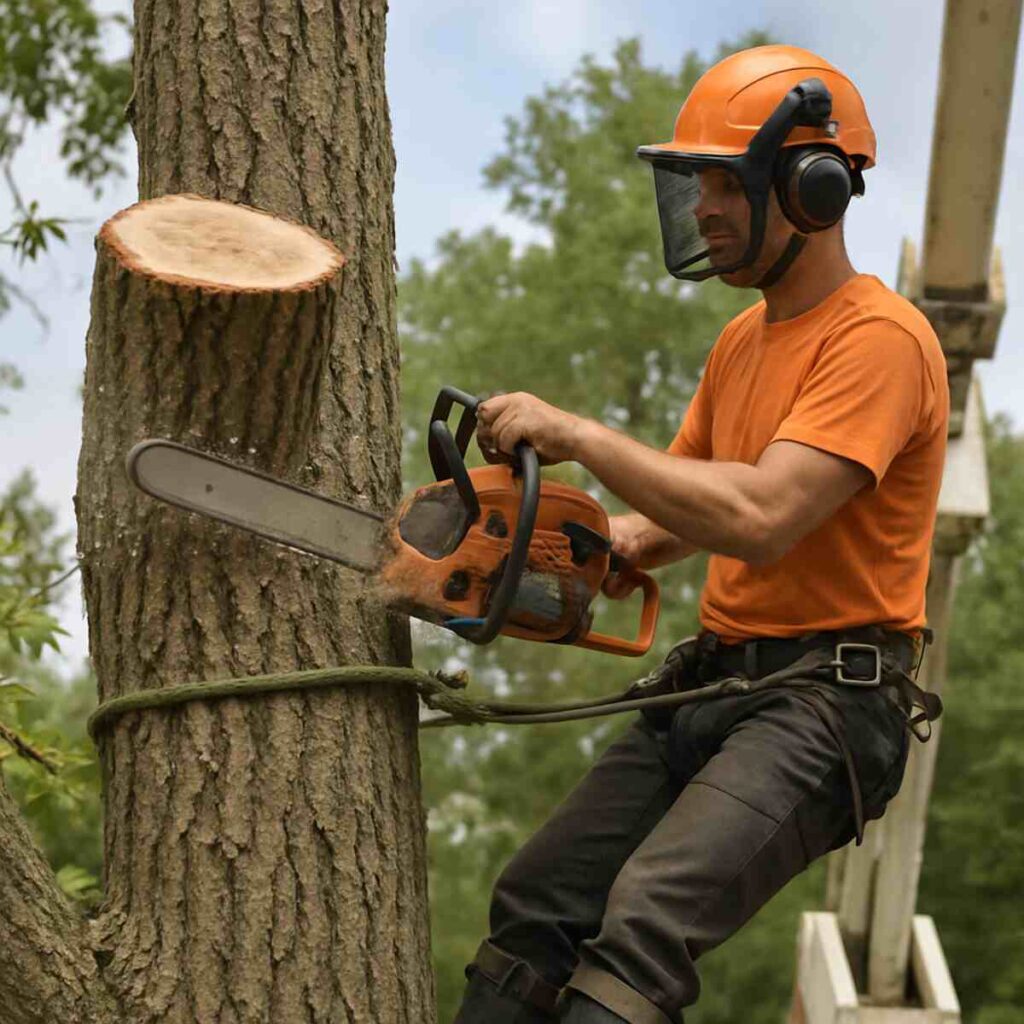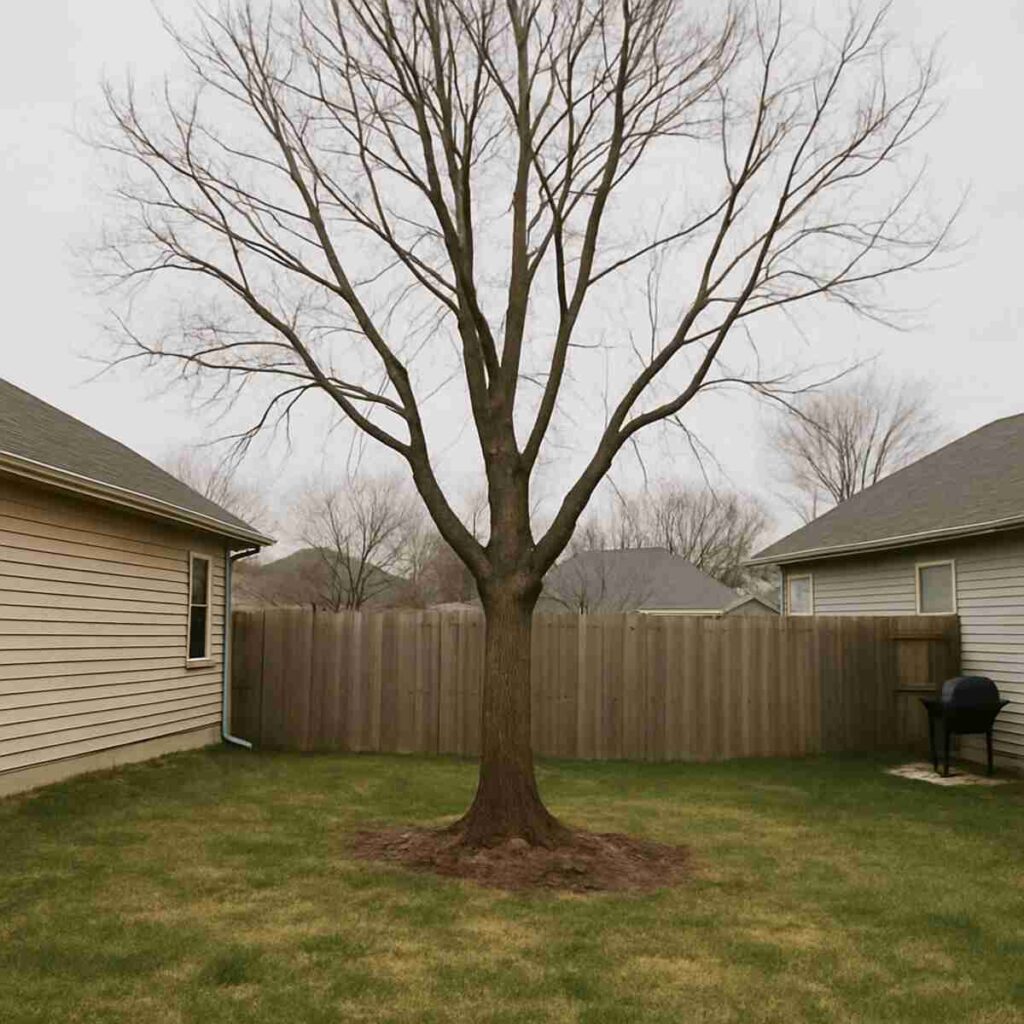Hey Vallejo residents! If you’re dealing with a troublesome tree, you might be thinking about removing it yourself. Before you dive in, let’s talk safety. Removing a tree isn’t just about chopping it down; it’s a task that requires careful planning and the right precautions to ensure everyone stays safe. So, let’s dive into some tree removal safety tips that will help you manage this task safely and effectively. Have the Best information about tree removal Vallejo.
First things first, why would you need to remove a tree? Trees are a beautiful part of our landscape, enhancing the aesthetics and providing numerous environmental benefits. However, sometimes they need to be removed due to various reasons, such as disease, storm damage, or posing a risk to your property. In Vallejo, with its mix of windy days and varied landscape, tree removal might be more common than you think. Let’s explore some common scenarios.
Disease and Decay
One of the primary reasons for tree removal is disease or decay. Trees, like all living organisms, are susceptible to diseases that can compromise their structural integrity. Fungal infections, insect infestations, and root rot are common culprits. A diseased tree can become brittle and unstable, posing a risk of falling. Regular inspections can help identify these issues early on.
Storm Damage
Vallejo’s weather can be unpredictable, with strong winds and storms that can damage trees. After a significant weather event, it’s essential to assess your trees for broken branches, leaning trunks, or uprooted roots. Even if a tree appears stable after a storm, internal damage might have occurred, making it unsafe.
Property and Safety Risks
Trees that grow too close to buildings, power lines, or other structures can pose significant risks. Overgrown branches can damage roofs, and roots can disrupt foundations. In some cases, a tree might be leaning dangerously, increasing the risk of it falling during a storm. Evaluating the proximity of trees to your property is crucial for maintaining safety.
When to Consider Emergency Tree Removal
Sometimes, tree removal can’t wait. If a tree is dangerously leaning, has large dead branches, or shows signs of disease, it might be time for emergency tree removal. In these cases, it’s crucial to act fast to prevent any potential damage or injury. Emergency situations demand quick decision-making, but always prioritize safety over haste.
Identifying Emergency Situations
Recognizing when a tree poses an immediate threat is key. Sudden changes in the tree’s position, such as a noticeable lean or cracks in the soil around its base, can indicate instability. Additionally, large branches that appear ready to break off can be hazardous, especially during high winds.
Acting Swiftly but Safely
In an emergency, time is of the essence, but rushing can lead to accidents. Assess the situation calmly and determine whether you can safely manage the removal yourself or if professional help is needed. Ensure that the area around the tree is clear of people and valuables before proceeding.
Professional Emergency Services
For urgent tree removal, professional services in Vallejo are equipped to handle such situations efficiently. These experts have the tools and experience to safely remove trees without exacerbating the risk. They can often respond quickly, mitigating potential damage to your property.
Planning Your Tree Removal
Before you grab your chainsaw, it’s essential to plan your tree removal process carefully. Here’s a step-by-step guide to help you:
Assess the Tree
Start by assessing the tree’s condition. Is it healthy enough to be safely removed by yourself, or is it too risky? Look for signs of rot, cracks, or disease. If you’re unsure, it might be worth consulting a professional. A thorough assessment can prevent accidents and ensure the tree is removed without incident.
Evaluating Tree Health
Begin by examining the tree from base to crown. Look for visible signs of decay, such as mushrooms growing around the base or cavities in the trunk. Check for dead branches, which can be particularly hazardous during removal.
Determining Structural Stability
A tree’s structural stability is crucial for a safe removal process. Inspect the trunk for cracks or splits, and observe any leaning tendencies. If the tree is leaning significantly, it might require specialized equipment for safe removal.
Consulting with Experts
When in doubt, consulting with an arborist or tree removal specialist can provide valuable insights. These professionals can offer an expert opinion on the tree’s condition and recommend the best course of action, ensuring safety and efficiency.
Check the Surroundings
Before doing anything, take a good look around. Are there power lines, buildings, or other trees nearby? You need to make sure there’s enough space for the tree to fall safely. Remember, safety first!
Identifying Obstructions
Survey the area around the tree for potential obstacles. Power lines, fences, and nearby structures can complicate the removal process. Identify a clear path for the tree to fall without causing damage.
Planning the Fall Path
Determine the best direction for the tree to fall. Ideally, it should fall in a direction away from structures and obstacles. Mark this path clearly and ensure everyone involved in the removal process is aware of it.
Preparing the Site
Clear the area of any movable obstructions, such as garden furniture or vehicles. This step ensures a safe working environment and reduces the risk of accidents during the removal process.
Get the Right Equipment
For safe and effective tree removal, you’ll need the right tools. Here’s a quick checklist:
- Chainsaw or hand saw (depending on the tree size)
- Safety goggles and gloves
- Hard hat
- Ladder
- Rope (for directing the fall)
Choosing the Right Tools
Select the appropriate tools based on the tree’s size and condition. A sturdy chainsaw is essential for larger trees, while a hand saw might suffice for smaller ones. Ensure all equipment is in good working condition before starting.
Personal Protective Gear
Safety gear is non-negotiable. Equip yourself with a hard hat, safety goggles, and gloves to protect against debris and injuries. Sturdy footwear with good grip is also essential for maintaining balance.
Preparing for Potential Challenges
Anticipate potential challenges during the removal process, such as difficult cuts or unexpected tree behavior. Having additional tools, like wedges or an extra rope, can help manage these situations effectively.
Consider Hiring Professionals
If the tree is large or in a tricky spot, it might be best to call in the experts. Professional tree removal services, especially those familiar with the Vallejo area, can ensure the job is done safely and efficiently. Plus, they have the experience and equipment to handle even the toughest jobs.
Evaluating When to Hire Help
Assess the complexity of the removal task. Large trees, those in confined spaces, or those with compromised stability often require professional intervention. Recognizing your limits is crucial for safety.
Benefits of Professional Services
Professional tree removal services offer numerous benefits. They have specialized equipment to handle challenging removals, reducing the risk of accidents. Additionally, their expertise ensures the tree is removed efficiently, minimizing disruption to your property.
Finding the Right Service in Vallejo
In Vallejo, several reputable tree removal services offer competitive pricing and quality work. Research local companies, read reviews, and request quotes to find a service that fits your needs and budget.
Safe Tree Removal Techniques
If you’re ready to tackle the job yourself, here are some safe techniques to keep in mind:
Notching and Cutting
To control the fall of the tree, you’ll need to make a notch cut on the side of the tree facing the direction you want it to fall. This cut should be about a quarter of the tree’s diameter. Then, make a back cut on the opposite side to allow the tree to fall.
Making the Notch Cut
Start by making a horizontal cut about a quarter of the way through the tree. This cut should be at a comfortable height, typically waist level. Ensure the cut is even and straight to guide the tree’s fall effectively.
Creating the Back Cut
Position the back cut slightly above the bottom of the notch. This cut releases the tree, allowing it to fall in the intended direction. Be cautious as the tree begins to lean, and move away promptly once the cut is complete.
Ensuring a Safe Fall
Monitor the tree’s movement closely as you complete the cuts. Ensure the fall path is clear and everyone is at a safe distance. A successful notch and back cut combination can prevent unexpected falls or damage.
Using Ropes
Ropes can help guide the tree as it falls, making the process safer. Secure a rope high up on the tree and have a helper guide the tree’s fall direction. This is especially useful if the tree is leaning or if there are obstacles nearby.
Securing the Rope Properly
Attach the rope securely to a sturdy point high up on the tree. Ensure the knot is tight and won’t slip during the fall. The rope should be long enough to allow a safe distance for the person guiding the fall.
Coordinating with Helpers
Effective communication with your helper is vital. Establish clear signals or verbal cues to coordinate the tree’s fall. The person guiding the rope should maintain tension and be ready to adjust as needed.
Managing Leaning Trees
For trees with a natural lean, ropes are particularly useful. They provide additional control over the fall direction, reducing the risk of the tree veering off course unexpectedly.
Stay Alert and Clear the Area
Once the tree starts to fall, make sure everyone is at a safe distance. Yell a warning and keep an eye on the tree’s path. Always have an escape route planned in case something goes awry.
Maintaining Vigilance
During tree removal, staying alert is crucial. Continuously monitor the tree’s behavior and be ready to react to any unexpected movements. Keep communication open with any helpers on-site.
Clearing the Area
Ensure the area around the tree is free of bystanders, pets, and valuables. Clearly mark the fall zone and ensure everyone is aware of the boundaries. Safety should always be the top priority.
Planning Escape Routes
Have a clear escape route planned before making the final cuts. This route should lead away from the tree’s fall path and provide a safe distance from potential hazards. Practicing the escape route in advance can be beneficial.
Affordable Tree Removal Options in Vallejo
If DIY isn’t your thing, or if you’re facing a particularly challenging tree situation, don’t worry—there are affordable options for tree removal in Vallejo. Many local services offer competitive pricing and can save you the hassle and risk of doing it yourself.

Exploring Local Services
Vallejo boasts a variety of tree removal services, each offering different levels of expertise and pricing. From small family-owned businesses to larger companies, residents have numerous options. Researching these services can help you find one that fits your needs and budget.
Requesting Quotes and Comparing Prices
To find the best deal, request quotes from multiple tree removal companies. Provide detailed information about the tree’s size, location, and condition to get accurate estimates. Comparing these quotes can help you identify the most cost-effective option.
Evaluating Customer Reviews
Customer reviews can provide valuable insights into a company’s reliability and quality of work. Look for reviews that mention timeliness, professionalism, and customer satisfaction. A company with positive reviews is more likely to deliver satisfactory results.
Final Thoughts on Tree Removal
Tree removal, whether for emergencies or maintenance, is a task that requires careful planning and execution. By understanding the risks and taking the necessary precautions, you can ensure the safety of yourself and your property.
Prioritizing Safety Above All
Safety should always be the primary concern during tree removal. From planning to execution, every step should be taken with caution and consideration. Assess the risks, use the right equipment, and never hesitate to call in professionals if needed.
Understanding the Importance of Maintenance
Regular tree maintenance can prevent the need for emergency removals. Pruning, inspections, and addressing minor issues early can prolong a tree’s life and minimize risks. Investing in maintenance can save time and money in the long run.
Consulting with Professionals
When in doubt, it’s always best to consult with or hire a professional. They have the tools and expertise to handle tree removal safely and efficiently, giving you peace of mind. Professional services can provide valuable advice on tree health, care, and removal strategies.
Stay safe, Vallejo, and happy tree tending!



